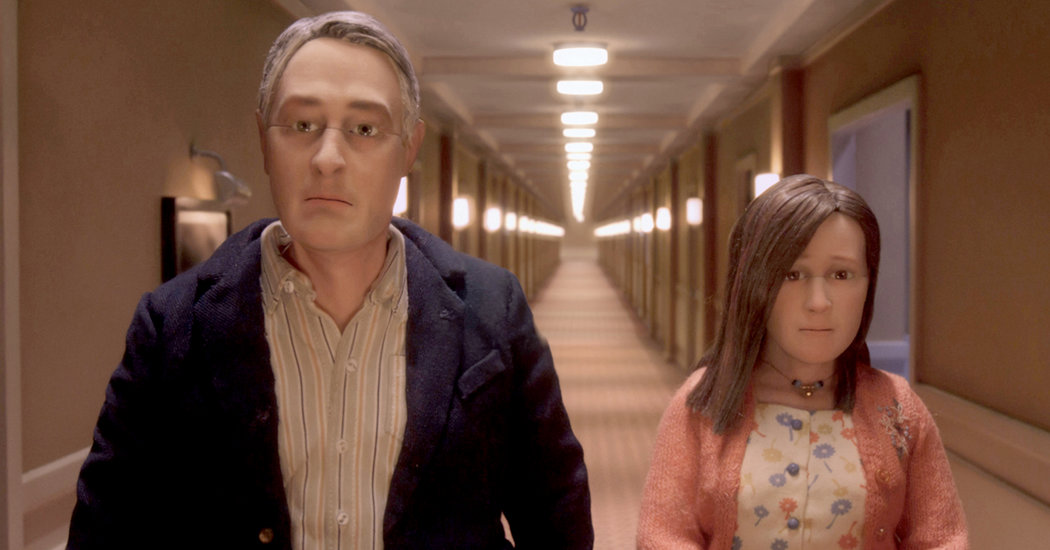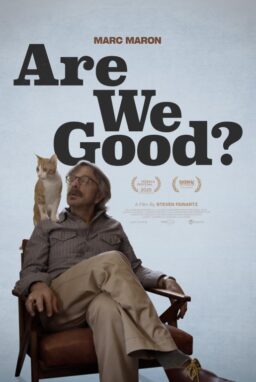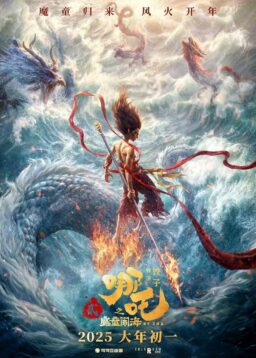Catching co-directors Charlie Kaufman and Duke Johnson at
the tail-end of a whirlwind festival tour that included premiere screenings at
Venice, Telluride, and Toronto, the two writer/directors were still playful and
engaged in discussing their masterwork, the stop-motion/animated “Anomalisa.”
In the film, based on a play, David Thewlis voices a customer service expert
who is traveling on business—another speaking engagement in another town where
everyone looks the same and sounds the same. That’s all I’m going tell you
because “Anomalisa” works best for those who know the least about it. Suffice
to say, Kaufman is once again playing with themes of individuality and what it
means to be human, as he did in “Being John Malkovich,” “Adaptation,” “Eternal
Sunshine of the Spotless Mind” and “Synecdoche, New York.” He’s still one of our
best writers, and “Anomalisa” is one of his best films.
Have you reached
exhaustion point yet?
CHARLIE KAUFMAN: Oh, like two weeks ago. Maybe longer.
DUKE JOHNSON: We were pretty exhausted in Europe.
CK: It seems like a thousand years ago, but it probably wasn’t.
You did
Venice-Telluride-Toronto. Usually someone skips one.
CK: Yeah. And then San Sebastian. And then we went back to
Spain after Toronto. And then Fantastic Fest. We just went to London. We just
got back Sunday.
Is it fun?
CK: No! I mean, some of it’s fun. It’s nice that the movie
is being well-received. It would be really horrible if it weren’t and we had to
do this anyhow.
Let’s talk about that
reception. I read a review today that felt like it was trying to place the film’s
themes in the context of your career, Charlie. I was wondering how much of that
you do when you’re working on a project?
CK: Only afterwards. Only when people write those things.
People come up to and me and say things like, “Oh, you like to have a lot of
people with the same face.” And I don’t know what they’re talking about. And
then it’s like “Oh, yeah, I guess.”
So there’s never “This
is expanding on an idea I played with before in X”? Or worry about repeating
yourself?
CK: Well, I do now
that you said it. There are so many things that block me—to add another to
the list? It all goes under the category “Is This Any Good?” Is this any good?
I try to avoid it when I’m writing because it makes it impossible to write. But
I’m susceptible to that.

And then do you read
those analyses after the fact? Do people’s interpretations allow you to see
your work in different ways?
CK: Sure. Absolutely. Not only from critics but from people
that I meet. People will say things after a screening that it affects them in a
certain way, which is why I don’t like to explain what certain things are
about. I want them to have that. It limits people’s ability to understand
something if I say it’s “about this.” That’s happened to us a bunch on this.
DJ: I mentioned this last night at the Q&A. We have
specific experiences where people come up to us and say what it was about to
them and it meant so much to them and they connected to it because this is what it was about. And it’s
different. And they don’t even say it…some people will say “Is it about this”
but other people will say “You’re saying this”
and it’s gorgeous; it’s wonderful.
And those are
surprising interpretations?
CK: Sometimes it’s surprising, sometimes it’s not, but what
I like about that is that they have the authority to say what it’s about and
they’re not asking my permission or asking me if I’m right.
DJ: My personal interpretation is that there are a lot of layers
and a lot of things going on and some specific thematic through lines will
stand out to specific people who can relate to that more.
CK: It’s a Rorschach Test.
Well, then let’s talk
about how you create a Rorschach Test. A lot of filmmakers would say “This is
the thematic purpose of this piece.” How do you create something for which
there are multiple interpretations, multiple thematic purposes?
CK: The way I do it when I’m writing is to look at something
as an exploration of something that I’m exploring, and not come to a
conclusion. Not say, “And it’s important to love.” Or whatever. “Family is
everything.” I’m going to look at this idea about loneliness, or inability to
connect. Or an experience in a relationship. And you just explore it. You don’t
have a goal in the end when you’re writing it. Let whatever happens happens.
And so it starts to be an experience to the person writing it, which helps it
be open to other people.

Is that nerve-wracking
in terms of process?
CK: Yes! But, so what? It feels honest to me. I try to do
something honest when I’m working. My job isn’t to make myself comfortable.
DJ: When we were working together I thought it was a really
interesting way to work. I went to film school. What are the themes? What do I
want to say with this movie? That’s
what you’re taught to talk about, and we didn’t do that with this movie. We
would talk about … there was almost sort of an intuitive understanding. I felt I
knew what it was about. But we didn’t really talk—this is what this piece is
about. This is what Michael is feeling; this is what Lisa is feeling in this
moment. This is what he wants. This is what she wants. This is why. We would
delve into the character’s emotional experiences very specifically from beat to
beat.
But not the overall
picture?
DJ: We would talk generally about some things. It’s
difficult to connect—the broad themes. But not making a statement about
something. Again, just my opinion, I heard somebody say once, Kubrick or
somebody, “Great art asks questions but doesn’t give any answers.” I think
there’s some truth to that. Exploring ideas.
CK: When I’m writing a script, before I can write dialogue
or anything, I have two or three hundred pages of notes, which takes me a year.
So, it’s not like “what happens next.” I’ve got things that I’m thinking about
but I don’t settle on them. And if I try to write dialogue before then, I can’t.
It’s just garbage. There’s a point I can get to where I start writing character
and then through the dialogue, after all of this preparation, the thing starts
to feel like it’s a character developing through the dialogue. A lot of
character traits do come from writing dialogue, but I have to be ready to do
it.
Are those notes more
intangibles—people seeking connection—or are they more practical—someone’s
going on a business trip?
CK: All of the above. Yes, story ideas, but it’s also musing
on stuff that I’m thinking about. This leads me to this and this leads me to
this. They’re kind of random and haphazard. Often I can’t find anything.
Somehow, by doing that, even though I don’t necessarily refer to them in a
specific way, I have some sort of architecture in my head.
When you see
co-directors on a film, it can be confusing as to who does what? How do you two
co-direct a film?
DJ: Charlie and I discussed everything. Every decision that
made it into the film. Costume design. Lighting. Shot selection. Puppet design.
Character design. Every decision that ends up in the film is a product of our
collaborative conversations.
CK: Every shot is reviewed by both of us. We don’t proceed.
DJ: We went through the whole movie before we shot
everything and talked about every beat, and then before every shot. You set up
the shot, you set up the angle, and then you get direction, and then that shot
launches and it usually takes several days. Before we would launch a shot, we
would re-discuss, and then the shot would launch. Throughout the process,
sometimes things would evolve or change, and we would review it together. And
that’s how the whole process went.

How do we integrate
the cast? Does the cast have any input in any of this?
CK: I think we had the advantage—we only had three days with
the cast. But we had the advantage of them having done the play so they knew
the characters. Adjustments were easier than if they had come in cold. We were
both there during recording. And we videotaped it, so we had gestures and stuff
that they made during the recording that we were able to use as a reference.
Their contribution was enormous because we recorded them first. The tone of the
whole thing and the design of the whole thing comes out of this three days of
recording.
Do either of you work
from any cinematic or literary or art inspirations for a project like this?
CK: We talked. We compared stuff. We talked about ideas.
Any influences in
particular?
DJ: We had a vision board that had images from different
movies.
CK: I don’t really remember what though.
DJ: It’s hanging in my office, but it might not be because of that movie, it might just be
a color in that shot or lighting. There was all different kinds of stuff, and a
lot of stuff we found on the internet. Painters. All kinds of references. We
wanted, specifically, for it to feel cinematic. So we looked at a lot of
live-action movies for the lighting and direction, so it would not be sort of
traditional animated lighting.
[Getting the wrap-up
a few minutes early, I protest politely and Charlie wants to know the next
question.] The next one’s pretty long though.
CK: I’ll give a short answer.
It’s been seven years
since “Synecdoche, New York.” How has the industry changed?
CK: YES. That’s a long one.












